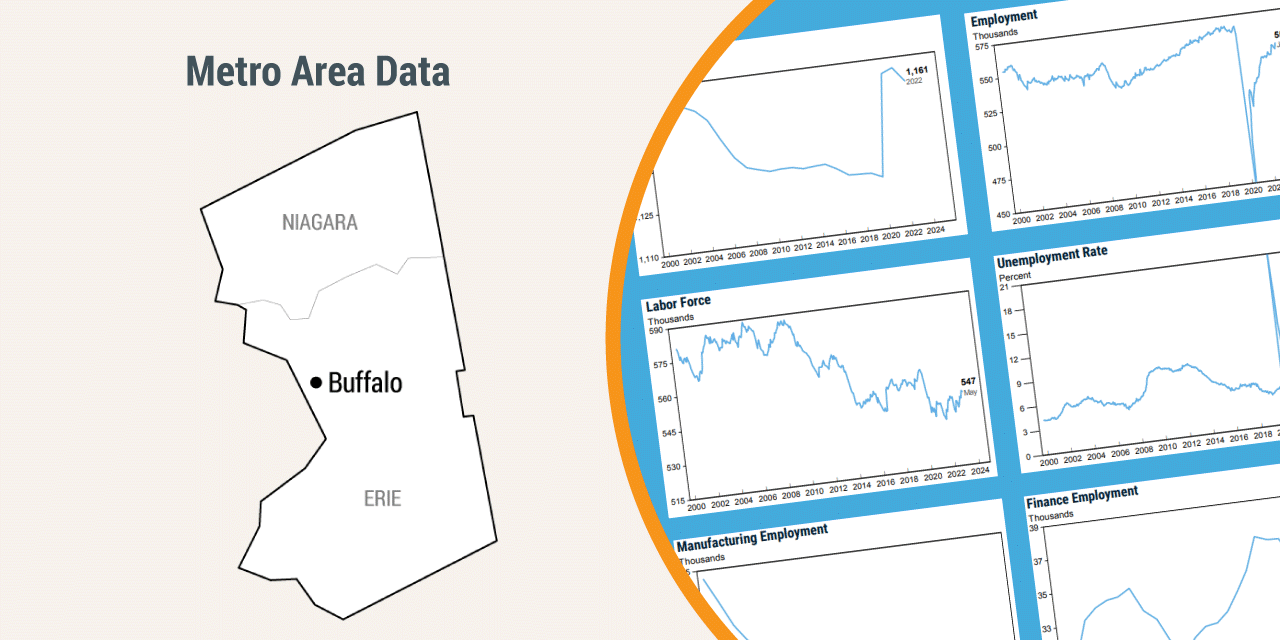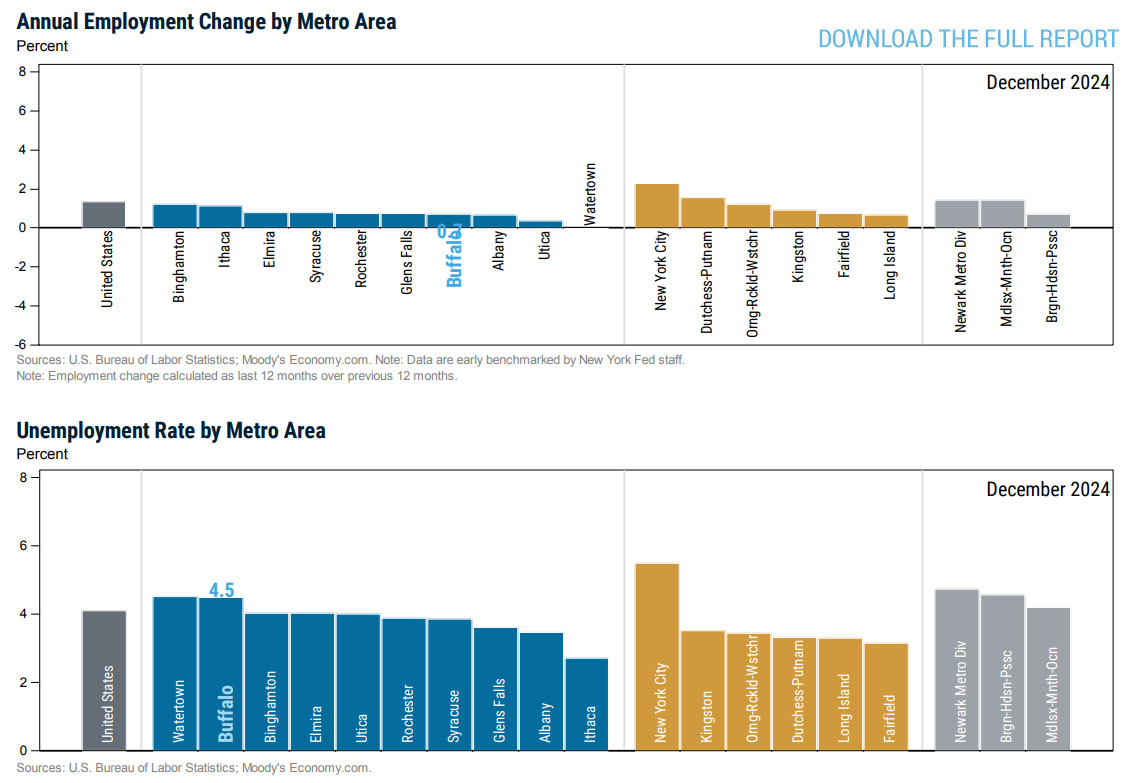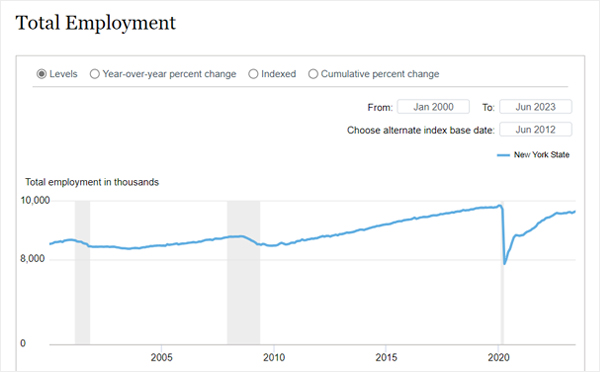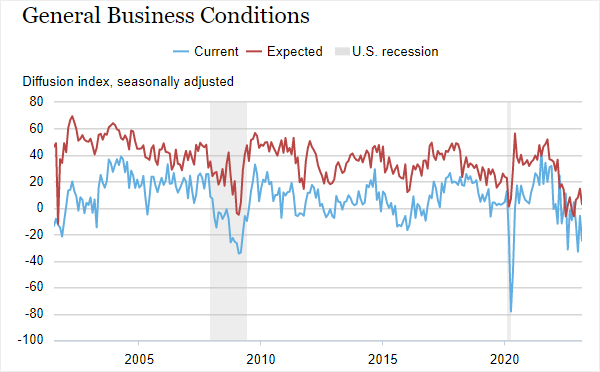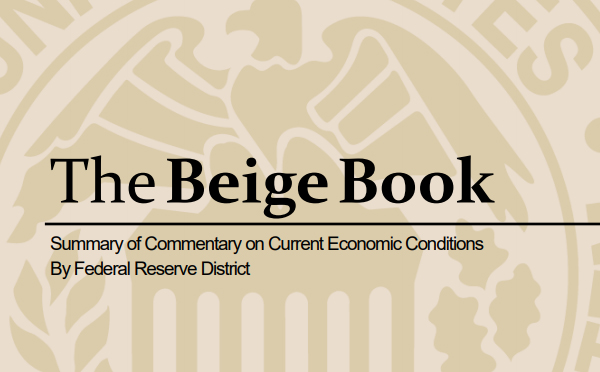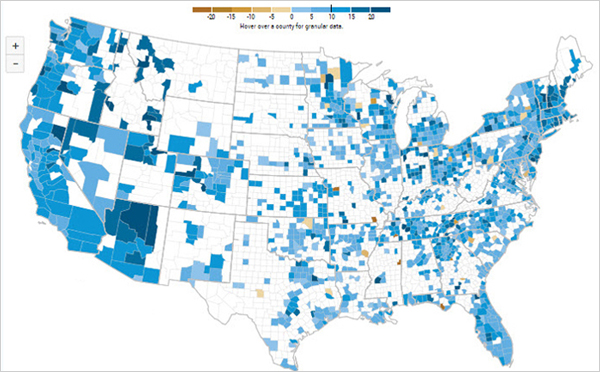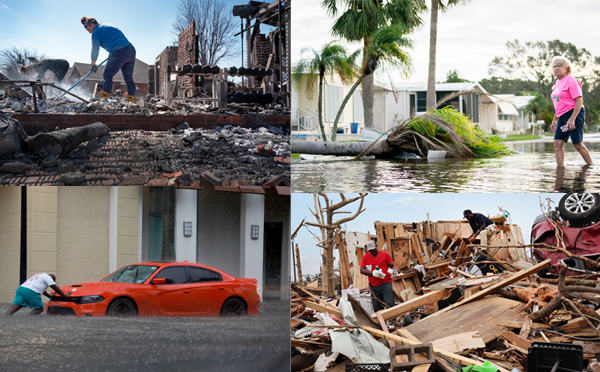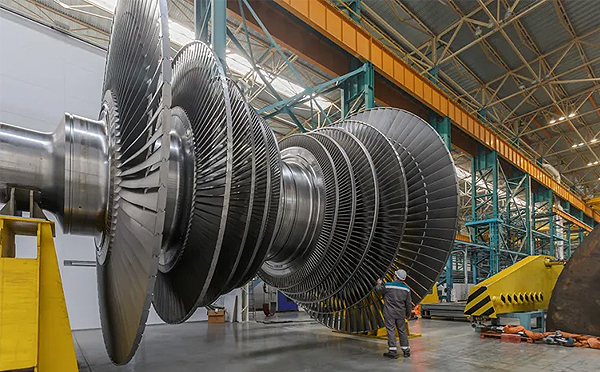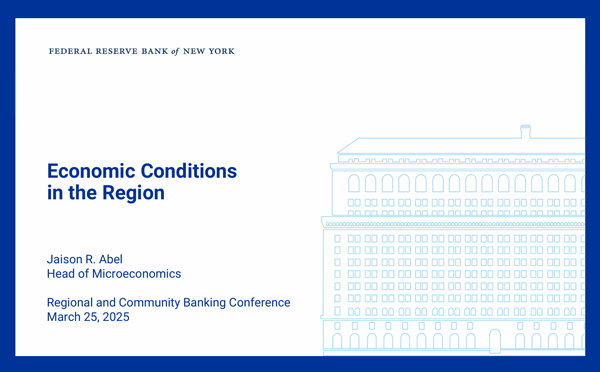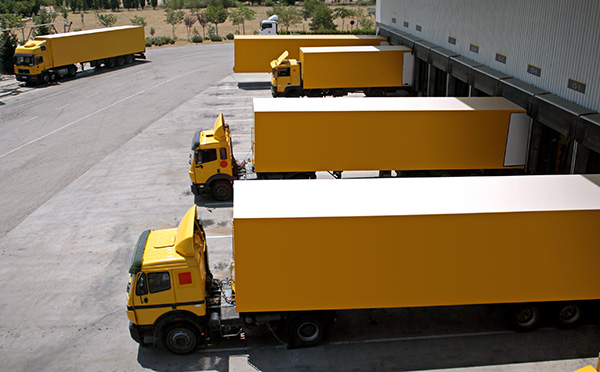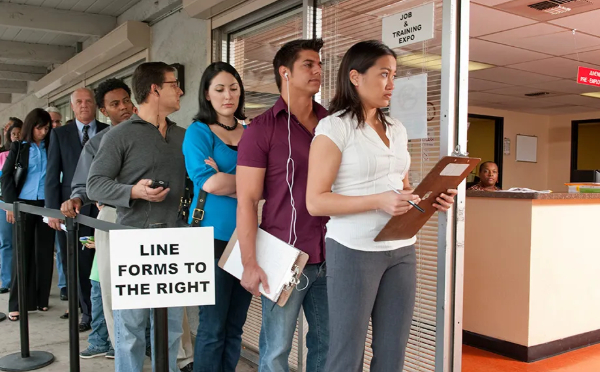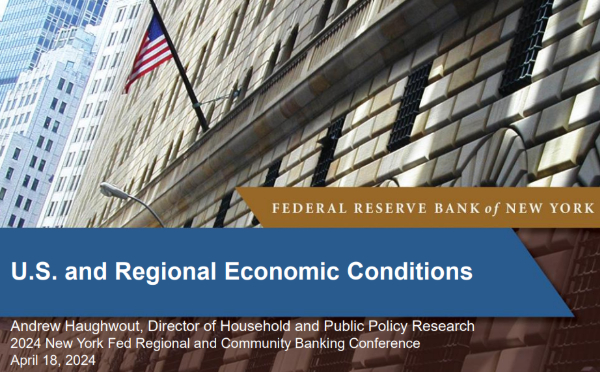Buffalo Metro Area
Buffalo is home to more than 1.1 million people, making it the second-largest metropolitan area in New York State. Historically, manufacturing was the driving force of Buffalo’s economy, with steel factories and auto parts suppliers having a particularly strong presence.
Buffalo Metro Area Economic Indicators
Economic and Demographic Trends
| Population 2024 | Pop growth 2024, 10-year change (%) | GDP 2023, billions ($) | Job growth 2024, 5-year change (%) | Median household income 2023 ($) | Median home price 2023 ($) | Pop share age 25+ with BA+ 2023 (%) | |
| Buffalo | 1,160,172 | 0.7 | 91 | -1.8 | 68,880 | 245,000 | 36.0 |
| Rochester | 1,057,218 | -0.7 | 77 | -2.0 | 71,200 | 200,000 | 36.9 |
| Syracuse | 655,189 | -1.7 | 51 | -1.3 | 70,000 | 200,000 | 35.0 |
| New York State | 19,867,248 | -0.7 | 2,183 | 0.8 | 80,150 | 400,000 | 40.7 |
| United States | 340,110,988 | 6.5 | 27,812 | 4.7 | 76,170 | 325,000 | 36.2 |
Sources: U.S. Census Bureau; U.S. Bureau of Labor Statistics; NYSDOL; U.S. Bureau of Economic Analysis; IPUMS USA-University of Minnesota; New York Fed calculations. Data retrieved through data.census.gov, Moody's Economy.com, or directly from source.
*These are neighboring metro areas.
The New York Fed publishes indicators, trends, research and analysis on our Second District. Explore the content below to learn more.
December 22, 2025
December 22, 2025
December 16, 2025
December 15, 2025
November 26, 2025
November 5, 2025
October 2025
Richard Deitz and Kartik Athreya | September 23, 2025
By Jaison R. Abel, Richard Deitz, Natalia Emanuel, Ben Hyman, and Nick Montalbano | September 4, 2025
BY Matteo Crosignani and Martin Hiti | July 1, 2025
BY Jaison R. Abel, Richard Deitz, Sebastian Heise, Ben Hyman, and Nick Montalbano | June 4, 2025
March 25, 2025
BY Jake Scott, Ambika Nair, and Claire Kramer Mills | March 6, 2025
By Jaison R. Abel, Richard Deitz, and Ben Hyman | March 5, 2025
BY Jaison R. Abel, Richard Deitz, Natalia Emanuel, and Benjamin Hyman | September 4, 2024
BY Jaison R. Abel and Richard Deitz | May 20, 2024
May 20, 2024
May 7, 2024
April 18, 2024
February 21, 2024
By continuing to use our site, you agree to our Terms of Use and Privacy Statement. You can learn more about how we use cookies by reviewing our Privacy Statement. 










